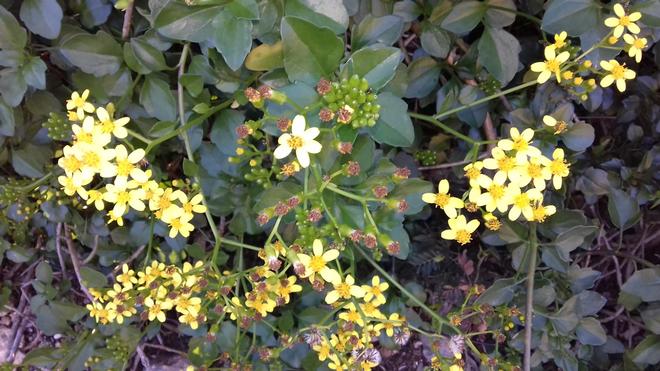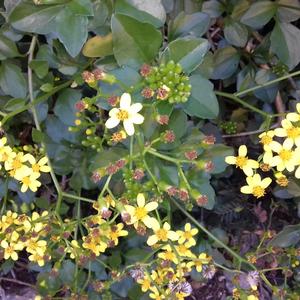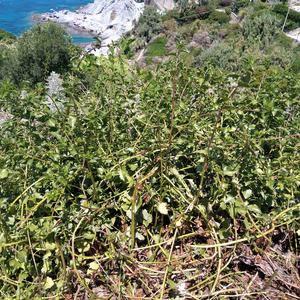
5 May 2022
Cape ivy (or Creeping groundsel) Senecio angulatus is an evergreen vine native to South Africa, with fleshy and glossy green leaves. In the northern hemisphere the plant blooms from November to January, with large, honey-scented, yellow inflorescences. The fruits bear a tuft of hairs (pappus) that assist dispersal by the wind, but the plant mainly reproduce vegetatively from stem fragments.
Senecio angulatus forms dense and tall thickets that can cover and smother native flora both in the ground layer and canopy (when it climbs on trees), altering the light conditions in the invaded community and sometimes reducing the regeneration of native species. The plant contains toxic and carcinogenic alkaloids, which may be found in the honey or milk if the plant occurs in areas used by bees or grazing livestock.
In Italy, Senecio angulatus is more frequent along the coasts of the Mediterranean area. It is invasive in Liguria, Toscana, and Sardegna, casual* in Lazio and Abruzzo and naturalized** in the southern regions (Campania, Basilicata, Puglia, Calabria, Sicilia).
In the Ponziane archipelago the plant is cultivated in many gardens of Ponza and Ventotene. Although it is not very common in semi-natural habitats, in a few cases we observed an expansion of populations over time from dumped garden waste. In Ventotene, some vigorous populations occur in the garden of the Municipality, in the Ailanthus and Robinia formation behind the beach of Cala Nave, in the area behind Cala Rossano and along Via degli Olivi in proximity to the southern tip of Punta dell’Arco.
Therefore, the species can be considered in the initial stage of naturalization on these islands and should be monitored over time as potential invasive.
*Casual species: species that rely on repeated introductions for their persistence
**Naturalized species: they reproduce consistently and sustain wild populations over time without human intervention

